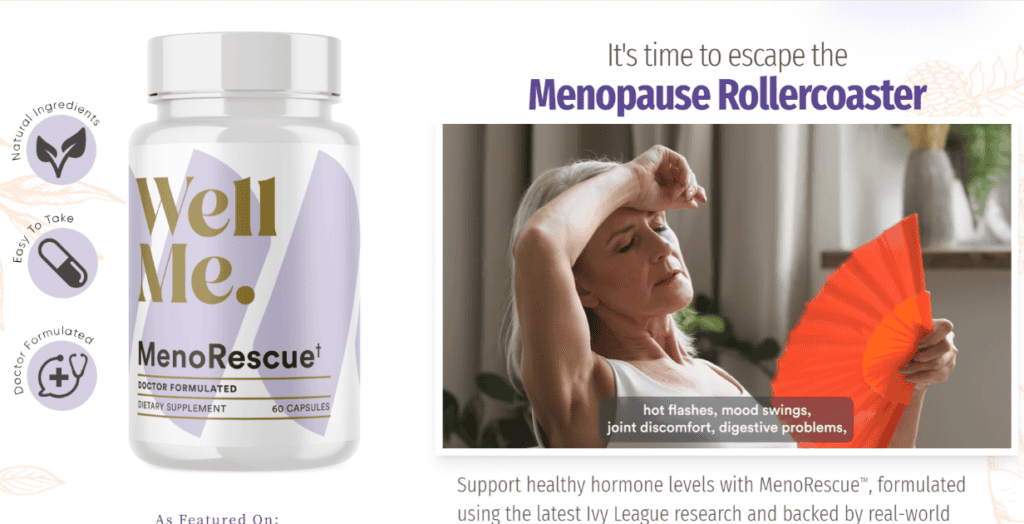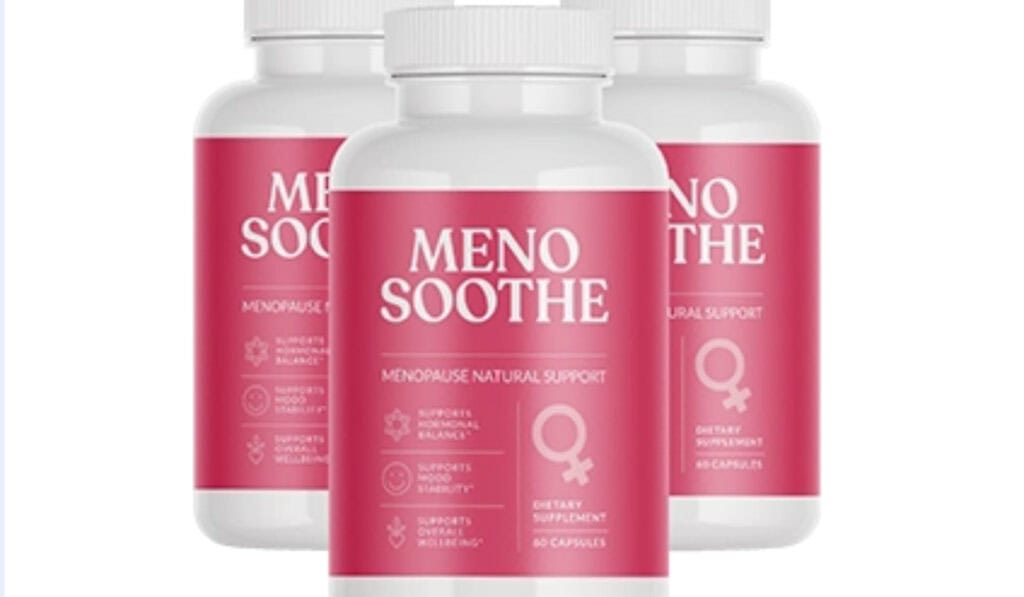A Comprehensive Guide
As you navigate the challenging waters of menopause, you might consider various treatments to ease your journey. Bioidentical hormone therapy has emerged as a popular choice, promising relief from menopausal symptoms with hormones that are chemically identical to those your body produces. However, it’s crucial to weigh its benefits, like mood regulation and decreased hot flashes, against potential risks, such as the increased risk of stroke and the implications of long-term use beyond 10 years of menopause.
Understanding the differences between FDA-approved bioidentical hormones and compounded hormones is essential. While FDA oversight provides a layer of safety and efficacy, compounded hormones lack this regulation, potentially posing greater risks. Micronized progesterone, an FDA-approved option, offers a safer profile for those concerned about the adverse effects of synthetic hormones. This guide aims to arm you with the knowledge to make an informed decision about whether bioidentical hormone therapy aligns with your health goals and menopause management plan.
Understanding Bioidentical Hormone Therapy
Bioidentical hormone therapy involves using hormones that are molecularly identical to those produced by the human body. This treatment aims to replace or supplement hormones that decrease during menopause. FDA-approved bioidentical hormones undergo rigorous testing for safety and efficacy, whereas compounded hormones do not have the same level of FDA oversight, raising concerns about their reliability and safety.
Defining Bioidentical Hormones
Bioidentical hormones are designed to mimic the hormones naturally produced by your body, primarily estrogen, progesterone, and sometimes testosterone. These can be FDA-approved and available through prescriptions or prepared as compounded hormones by pharmacists under less stringent FDA oversight.
Bioidentical vs Conventional Hormone Therapy: A Comparison
Conventional hormone therapy often employs synthetic hormones or those derived from the urine of pregnant horses, differing chemically from human hormones. In contrast, bioidentical hormones boast a molecular structure identical to endogenous hormones, theoretically offering a more natural and harmonized approach to managing menopause symptoms.
The Role of Bioidentical Hormones in Menopause Management
Bioidentical hormones play a pivotal role in alleviating menopause-related symptoms by replenishing diminished hormone levels. This therapy can significantly improve quality of life for many women, addressing issues from hot flashes to mood fluctuations and sleep disturbances.
Custom-Compounded Vs. FDA-Approved Bioidentical Hormones
When considering bioidentical hormones, you have the option between custom-compounded formulations and FDA-approved products. The key difference lies in estrogen levels; FDA-approved versions are standardized, while compounded variations can be tailored to individual estrogen levels, though without the rigorous safety and efficacy checks.
Safety and Efficacy Considerations
The safety and efficacy of bioidentical hormone therapy, particularly in the management of menopausal symptoms, are paramount. FDA-approved bioidentical hormones have been rigorously tested for safety and effectiveness, whereas compounded hormones lack this level of scrutiny, potentially leading to inconsistent outcomes in symptom management.
The Benefits of Bioidentical Hormone Therapy
Bioidentical hormone therapy, derived from plant sources, offers a natural alternative to traditional hormonal replacement. Taking bioidentical hormones can lead to significant relief from menopausal symptoms, contributing to an overall improvement in quality of life for many women.
Relief from Menopausal Symptoms
The primary benefit of bioidentical hormone therapy is its potential to alleviate common menopausal symptoms, including hot flashes, night sweats, mood swings, and weight gain. This relief can significantly enhance daily functioning and overall well-being during the menopause transition.
Potential for Lowered Risk of Osteoporosis
Bioidentical hormone therapy, when compared to traditional hormone therapy, may offer a lower risk of gallbladder disease and potentially less impact on the risk of osteoporosis. Taking hormones during menopause can help maintain bone density, a crucial factor in preventing osteoporosis and related fractures.
Improved Quality of Life and Well-Being
By stabilizing estrogen levels, bioidentical hormone therapy can significantly improve the quality of life and overall well-being for women undergoing menopause. This improvement is attributed to the reduction in severity of menopausal symptoms, enabling a more active and fulfilled life.
Evaluating the Risks
While bioidentical hormone therapy offers numerous benefits, it’s not without risks. Concerns include a potential link to gallbladder disease and the need for careful consideration when taking hormones, especially when comparing hormonal therapy to traditional hormone therapy in terms of safety profiles.
Possible Side Effects of Bioidentical Hormone Therapy
Side effects, varying from breast tenderness to mood changes, can occur during perimenopause and menopause as a result of bioidentical hormone therapy. It’s vital to be aware of these potential health risks to make an informed decision about your treatment options.
Concerns about Breast Cancer and Heart Disease Risks
Taking HRT (Hormone Replacement Therapy), including bioidentical hormones, has raised concerns about increased risks of breast cancer and heart disease. It’s essential to discuss these potential risks with your healthcare provider to determine if HRT is a suitable option for you.
Misconceptions and Realities of Compounded Bioidentical Hormones
Compounded bioidentical hormones are often marketed as a safer, more natural alternative to conventional HRT. However, without the rigorous testing and FDA oversight of approved products, the safety, efficacy, and consistency of compounded hormones can vary widely, leading to misconceptions about their benefits and risks.
Administration and Monitoring
Administering and monitoring bioidentical hormones are crucial steps in ensuring the therapy’s effectiveness and safety. This process involves choosing the right method of delivery, such as pills, patches, or creams, and closely tracking the body’s response. It’s a tailored approach, requiring adjustments and ongoing evaluation to align with your body’s needs and minimize potential risks.
Methods of Administering Bioidentical Hormones
Bioidentical hormones can be administered through various methods, each with its advantages. Options include oral capsules, topical creams, gels, patches, and subcutaneous pellets. The choice depends on personal preference, health considerations, and the specific hormones needed. These methods aim to deliver hormones in a way that mimics the body’s natural rhythms, promoting optimal absorption and effectiveness.
Importance of Dosage Selection and Monitoring
Correct dosage selection and regular monitoring are pivotal in bioidentical hormone therapy. They ensure the therapy remains beneficial over time, adapting to changes in your body and lifestyle.
When to See Your Healthcare Provider for Adjustments
Regular check-ins with your healthcare provider are essential for adjusting your bioidentical hormone therapy. If you experience side effects, or if your symptoms return or worsen, it may indicate a need for dosage adjustments. Additionally, life changes or new health conditions may necessitate a reevaluation of your therapy plan to ensure it continues to meet your needs safely and effectively.
Making an Informed Decision
Making an informed decision about bioidentical hormone therapy involves understanding the potential benefits and risks, considering your personal health history, and discussing your options with a healthcare provider. It’s about weighing the relief of menopausal symptoms against the possible health implications and deciding what’s right for you.
Who Should Consider Bioidentical Hormone Therapy?
Bioidentical hormone therapy may be a suitable option for individuals experiencing moderate to severe menopausal symptoms that affect their quality of life. Those seeking a more natural approach to hormone replacement, or who have not found relief with traditional therapies, might also consider this option. Consulting with a healthcare provider can help determine if it’s right for you.
Who Should Avoid It?
Individuals with a history of breast cancer, liver disease, or those at high risk for cardiovascular disease should avoid bioidentical hormone therapy due to potential health risks.
Alternatives to Bioidentical Hormone Therapy
For those who cannot or choose not to use bioidentical hormone therapy, alternatives include lifestyle changes, such as diet and exercise, herbal supplements, and non-hormonal medications to manage symptoms. Each alternative has its considerations, and what works for one person may not work for another, highlighting the need for personalized advice from a healthcare provider.
Navigating Therapy Duration and Discontinuation
The duration of bioidentical hormone therapy varies from person to person. It’s essential to use the lowest effective dose for the shortest time possible, reassessing the need for continuation regularly. The decision to discontinue should also consider the potential return of menopausal symptoms and how to manage them without hormone therapy.
Determining the Optimal Duration of Therapy
There’s no one-size-fits-all answer for how long to use bioidentical hormone therapy. The optimal duration depends on individual factors, including symptom severity, health risks, and personal preferences. Regular evaluations with your healthcare provider can help navigate the right timeframe for you.
Guidelines for Safely Stopping Bioidentical Hormone Therapy
When considering discontinuation, it’s crucial to do so gradually and under the guidance of a healthcare provider. A tapered approach helps minimize the recurrence of menopausal symptoms and adjusts your body to the change. Monitoring your body’s response and potentially exploring non-hormonal ways to manage symptoms are also essential steps.
Addressing Common Concerns and Questions
When considering bioidentical hormone therapy, it’s normal to have concerns and questions. Discussing the risks and benefits, understanding your health history, and exploring all treatment options are vital steps. Remember, what’s right for someone else may not be right for you. Understanding your body’s natural processes and how therapy aligns with them can guide your decisions.
Debunking Myths: Weight Gain and Bioidentical Hormones
One common myth is that bioidentical hormone therapy automatically leads to weight gain. However, weight changes are complex and can result from various factors, including aging, lifestyle, and menopause itself. While some may experience weight fluctuation, attributing it solely to hormone therapy oversimplifies the issue.
Bioidentical Hormones: More Effective or Just Hype?
The debate over the effectiveness of bioidentical hormones compared to traditional hormone therapy is ongoing. Some argue bioidentical hormones offer a more “natural” solution with fewer side effects, while others caution against unsubstantiated claims. Ultimately, the effectiveness varies by individual, making personal consultation and careful consideration essential.
Seeking Professional Guidance
Seeking professional guidance is a critical step in considering bioidentical hormone therapy. A healthcare provider can offer valuable insights into the risks and benefits, help navigate the complexities of choosing a therapy, and ensure your treatment plan is safely and effectively tailored to your needs.
When to Consult Your Healthcare Provider
Deciding when to consult your healthcare provider is crucial in navigating the journey through menopause with bioidentical hormone therapy. If you’re experiencing intense vasomotor symptoms, such as hot flashes or night sweats, or if the quality of your life is significantly impacted by menopausal symptoms, it’s time to seek professional advice. Additionally, any concerns about the risks associated with hormone therapy, including questions about the best dose of estrogen or the choice between FDA-approved hormone therapies and custom-mixed options from a compounding pharmacy, warrant a discussion with your provider. This conversation is vital for tailoring treatment to your unique symptoms and health profile, ensuring you receive the most beneficial and safe form of therapy.
Reducing Risks and Enhancing Benefits through Professional Oversight
Professional oversight plays a pivotal role in reducing the risks and enhancing the benefits of bioidentical hormone therapy. By consulting with your healthcare provider, you can ensure that your treatment plan is not only tailored to your specific needs but also closely monitored for efficacy and safety. This includes selecting the appropriate form of therapy, such as transdermal estrogen, which has been shown to have a favorable risk profile, and determining the optimal dose that aligns with your body’s natural hormones. Regular follow-ups allow for adjustments based on your evolving symptoms and health, minimizing potential side effects while maximizing relief from menopausal symptoms.
A Final Word: Balancing Benefits and Risks
Bioidentical hormone therapy offers a promising avenue for treating menopausal symptoms and improving women’s health. However, the journey through menopause is as unique as each individual, making it essential to weigh the benefits of relief from vasomotor symptoms and improved quality of life against the potential risks, including concerns about breast cancer and heart disease. Engaging in an open dialogue with your healthcare provider, backed by an understanding of both FDA-approved options and custom-compounded formulations, allows for a personalized approach. This balance ensures that you can make the most informed and beneficial choice for your postmenopausal wellness journey.
Making an Educated Choice on Bioidentical Hormone Therapy in Menopause
Making an educated choice about bioidentical hormone therapy during menopause means considering a multitude of factors, from the severity of your symptoms to your personal health history and risk factors. Understanding the difference between natural hormones that mimic those in the human body and conventional hormone therapies is a foundational step. By engaging in discussions about the latest clinical trials, the efficacy of estrogen replacement therapy, and the role of compounding pharmacies in customizing treatments, you empower yourself with the knowledge needed to navigate your menopausal transition. Remember, this decision is not just about treating menopausal symptoms; it’s about enhancing your overall quality of life and wellbeing during and after this significant life stage.




